Do you have a question about the Campbell Hausfeld WG2020 and is the answer not in the manual?
Equipment requires a dedicated 115 volt circuit. Extension cords are not recommended.
Connects to the work piece for completing the circuit.
The tool used to deliver wire and welding arc.
Connects the welder to the power supply.
Illuminates if the thermal switch has shut the unit off.
Adjusts wire feed rate clockwise to increase, counterclockwise to decrease.
Selects welding power with four possible selections.
Indicates a hazard that will cause death or serious injury if warning is ignored.
Indicates a hazard that could cause death or serious injury if warning is ignored.
Indicates a hazard that may cause minor or moderate injury or property damage.
Provides additional information pertaining to the product or its proper usage.
Always keep a fire extinguisher accessible while performing arc welding operations.
Improper use can cause electric shock, injury, and death. Take precautions.
The welding wire is live whenever the welder is turned on.
Never look at arc welding operations without eye protection.
Sparks and heat can cause severe burns. Use protective gloves and clothing.
Heat and sparks can ignite flammable materials. Remove flammables within 35 feet.
Do not weld in areas where flammable or explosive vapors may be present.
Do not weld on containers that have contained flammable materials.
Arc welding closed cylinders can cause explosion if not properly vented.
Do not breathe fumes; use respirator if ventilation is inadequate.
EMF may interfere with electronic devices like pacemakers.
Gas cylinders can explode if damaged. Handle carefully.
Never use flammable gasses with MIG welders.
Never lift cylinders by their valves or caps.
Select a clean, dry, well-ventilated area for optimal performance and longevity.
Instructions for assembling accessories like handle and work clamp.
Steps for attaching the handle and cylinder base to the unit.
Procedure for attaching the work clamp to the welder's cord.
Steps for loading and preparing the welding wire.
Welding power may be applied to terminals even when the trigger is not activated.
Guidelines for preparing and connecting shielding gas cylinders.
Improper handling can cause serious injury or death. Secure cylinders.
Describes common gases used for gas metal arc welding.
Explains the function and selection of the gas regulator.
Steps for connecting the gas cylinder, regulator, and hose.
Cylinder gas is under high pressure; point outlet away from yourself.
Detailed steps for connecting gas components and checking for leaks.
Emphasizes reading and complying with all safety and welding guidelines.
All personnel must wear protective welding gear.
Toxic fumes from galvanized materials; follow specific precautions.
Disconnect power and turn off machine before inspecting or servicing.
Checks to perform before each use, including cables and gun tip.
Periodic maintenance tasks like cleaning ventilation and drive roll.
Lists parts requiring routine maintenance and replacement.
How to change drive roll and contact tip for different wire diameters.
Steps for safely replacing the welder's power supply cable.
Explains FCAW and MIG processes, arc formation, and shielding.
Five basic techniques affecting weld quality: selection, heat, angle, speed.
How to adjust heat/voltage based on wire, position, and thickness.
Factors for choosing wire type and size, and AWS recommendations.
Explains travel and work angles for proper penetration and bead formation.
How to tune wire speed for optimal melting and arc quality.
Affects bead width and appearance; determined by wire, amperage, and material.
Procedure for removing slag after welding with flux-cored wire.
Wear safety glasses and protective clothing when removing slag.
Discusses flat, horizontal, vertical, and overhead welding positions.
Guidance on using multiple passes for joints and beveling edges.
How to orient the gun nozzle for different materials and penetration.
Detailed list of replacement parts with reference numbers and part numbers.
| Input Voltage | 120V |
|---|---|
| Input Current | 20A |
| Output Current Range | 30-90A |
| Welding Processes | MIG |
| Duty Cycle | 20% @ 90A |

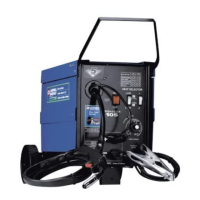
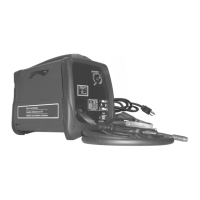
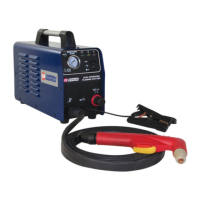
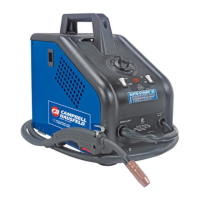
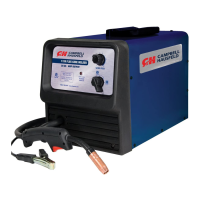
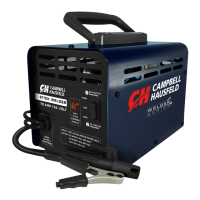
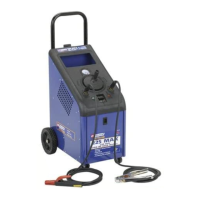
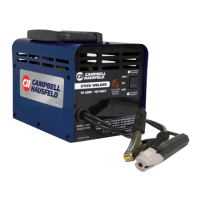

